Source: The Conversation (Au and NZ) – By Claire Smith, Professor of Archaeology, College of Humanities, Arts and Social Sciences, Flinders University
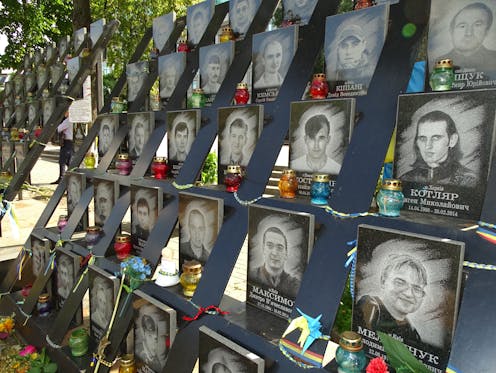
Adam Jones/flickr, CC BY-SA
It is doubtful Vladimir Putin has visited the memorials along the Alley of the Heavenly Hundred Heroes in central Kyiv.
If he had, he might not have underestimated the will of ordinary Ukrainian people to fight – and die – for their country’s independence and their right to determine its future.
Many countries revere soldiers who have given their lives for their country. What is special about Ukraine’s memorialising is the depth of respect for individual citizens who died defending Ukraine’s liberation and continued independence.
Kyiv’s street memorial to the Heavenly Hundred Heroes features images of ordinary people killed during the 2014 Revolution of Dignity which overthrew the government of pro-Russian President Viktor Yanukovych.
Those who died range in age from 16 to 83. They came from different age groups, genders, educational backgrounds and nationalities. They were entrepreneurs, pensioners, scientists, artists, students and activists.
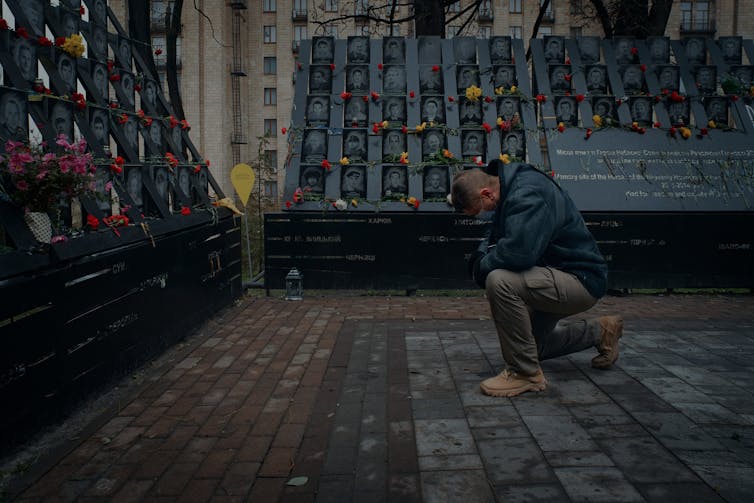
spoilt.exile/flickr, CC BY-SA
After three months of peaceful demonstrations, they were attacked by government forces. They protected themselves with rudimentary, low-impact weapons including a catapult.
The Order of the Heavenly Hundred Heroes was established to recognise civil courage, patriotism, upholding the principles of democracy, human rights and freedoms.
Remembering the individuals
There are many ways Ukrainians remember the courage of ordinary individuals.
In 2015, the Soviet-era Defenders of the Fatherland Day was replaced by the Day of the Defenders. This holiday was created to honour veterans and fallen members of the armed forces. Its slogan is “strength of the unbowed”.
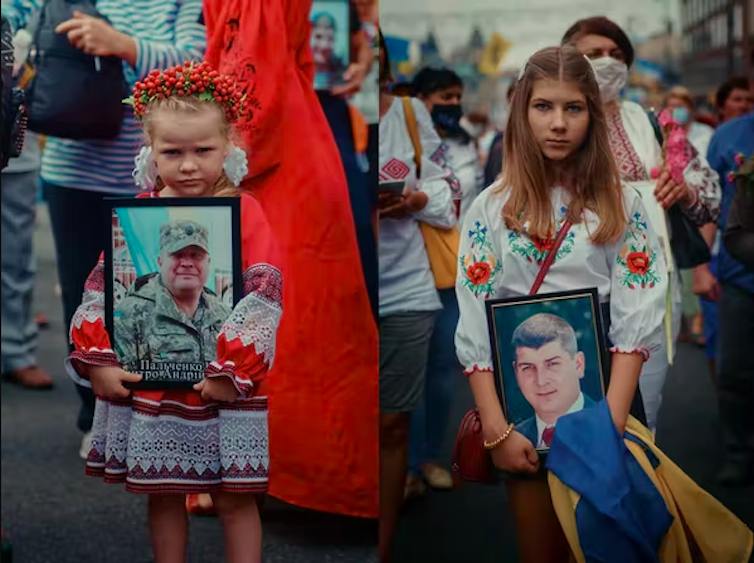
spoilt.exile/flickr, CC BY-SA
At marches on the Day of the Defenders and on Independence Day, people hold photographs of family members who have died supporting Ukraine’s independence.
Since the Russian invasion of Crimea in 2014, Ukrainians have increasingly sought to erase Soviet ideological influence on their lands. Some Soviet-era monuments have been dismantled or reworked to emphasise Ukrainian identity.
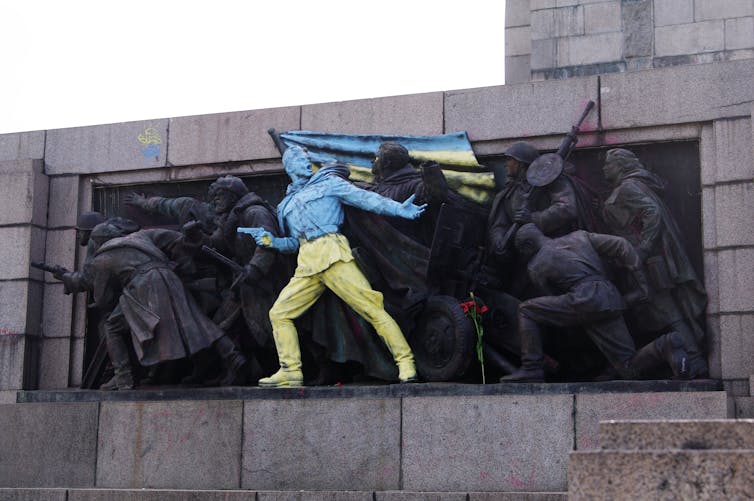
Luchesar V. ILIEV/Wikimedia Commons, CC BY-SA
Ukrainian memorials built over the last decade have been designed to bring attention to suppressed national memories, and to strengthen Ukrainian identity. Many of these were built out of grassroots initiatives, commemorating those who fell in the Russia-Ukraine conflict.
A recent study by one of us (Anna Grew) looked at the intensely personal quality of these memorials. Funded by family members, colleagues or local authorities, these monuments do not depict Ukrainians as victims. They show the dead not as an abstract group, but as complex and full people with hobbies, hopes and dreams, and a readiness to fight for their country.
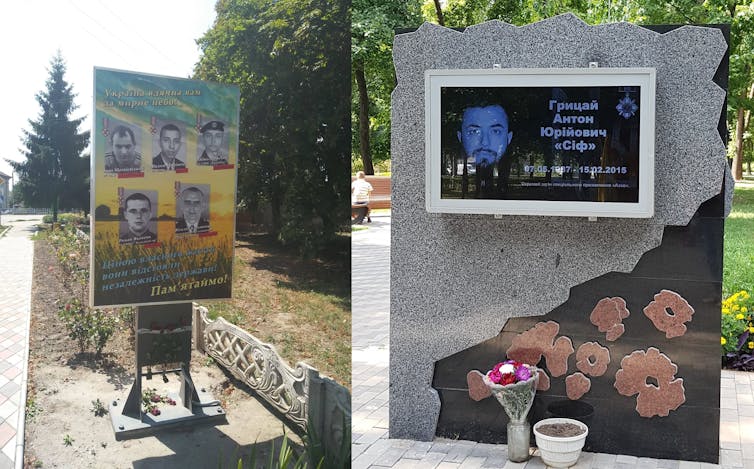
Anna Grew, Author provided
Writing today’s history
Russia has been using heritage as a tool in this conflict, placing Ukraine’s cultural heritage at risk.
Across the country, Ukrainians are working to protect heritage objects and places. Historic statues are wrapped. Museum objects are being relocated to basements and other more secure locations. Disaster plans are being enacted.
Read more:
Ukraine: Heritage buildings, if destroyed, can be rebuilt but never replaced
Important sites and collections have already been destroyed, and others are under threat.
In early March, Babyn Yar – a site where thousands of Jews were killed during the Holocaust, and which today is the site of a Holocaust memorial – was bombed. President Volodymyr Zelenskyy said this act aimed to “erase the true history of Babyn Yar.”
In the village of Ivankiv, north of Kyiv, a local history museum burned down. It held works by the famous Ukrainian folk artist Maria Pryimachenko. There is widespread concern Russia has a strategy to diminish Ukraine’s identity as a separate nation by destroying its authentic culture and history.
The National Museum of the Holodomor-Genocide is ensuring the experiences of individuals are not forgotten. On March 15 the Ministry of Culture and Information Policy established a new platform My War, where people can describe their experiences of the war.
As 29-year-old Vladimir Strashko writes:
we are strong, confident and united. We are together. We are Ukrainians.
‘People who do care’
Zelenskyy has prepared Ukraine for a Russian invasion from the day he was elected. He has nurtured Ukrainian unity, recognising it is critical to the outcome of any war.
In a statement from December, he encouraged Ukrainians to sign up as volunteers in the army:
because it is impossible to defeat an army whose number is unknown. An army, the ranks of which in one moment is reinforced by tens, hundreds of thousands, millions of people who do care.
On March 3, Zelenskyy posted on his Facebook page:
They wanted to destroy us so many times. They failed. We’ve been through so much! And if someone thinks that, having overcome all this, Ukrainians will be frightened, broken or surrender, he knows nothing about Ukraine. And he has nothing to do in Ukraine.
Zelenskyy’s message throughout the war has been about the ability and willingness of Ukrainians to defend their country. When we look at symbols like the Alley of the Heavenly Hundred Heroes, we understand the valour of ordinary citizens is at the heart of Ukrainian national character.
![]()
The authors do not work for, consult, own shares in or receive funding from any company or organisation that would benefit from this article, and have disclosed no relevant affiliations beyond their academic appointment.
– ref. How Ukraine’s personal, grassroots memorials honour individual citizens who fought for their nation – https://theconversation.com/how-ukraines-personal-grassroots-memorials-honour-individual-citizens-who-fought-for-their-nation-178899








